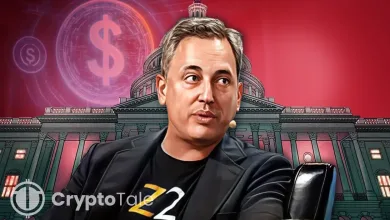The Blockchain Bulletin, May 31: SEC Drops Binance Lawsuit in Major Win

Hey folks! Welcome to the latest edition of the Blockchain Bulletin, where we provide you with a glimpse of the significant events that took place in the crypto world over the last 24 hours. The U.S. Securities and Exchange Commission (SEC) has officially dropped its lawsuit against Binance, marking a pivotal moment in crypto regulation.
The dismissal, filed jointly by the SEC, Binance, and founder Changpeng Zhao on May 29 in a Washington, D.C. federal court. The SEC had accused Binance in June 2023 of inflating trading volumes, misusing customer funds, and listing unregistered securities, among other violations. Binance’s U.S. arm, BAM Trading, was also involved. The court requested dismissal “with prejudice,” preventing the SEC from reopening the case.
On the other hand, the Thailand Securities and Exchange Commission intensified regulatory enforcement by blocking access to five major cryptocurrency exchanges on June 28. Bybit, 1000X, CoinEx, OKX, and XT.COM have been found operating without official licenses, violating Thailand’s Digital Asset Business Act B.E. 2561. The Thai SEC referred the matter to the Economic Crime Suppression Division to initiate legal action. This crackdown aims to protect local investors and prevent unauthorized platforms from facilitating illicit activities.
Related: Bybit Expands to Europe with MiCA License and Headquarters in Austria
Meanwhile, John Collison, co-founder and president of Stripe, revealed that the payment giant is in early discussions with banks about integrating stablecoins into core banking services. Stripe recently launched stablecoin accounts in 101 countries, allowing businesses to send, receive, and hold USDC and USDB tokens. Collison emphasized that banks show strong interest in stablecoins, viewing them as more than a passing trend.
Regulatory clarity also advanced in the U.S. as the SEC’s Division of Corporation Finance issued new guidance on crypto staking activities. The statement clarified that most staking, including self-staking and custodial staking on proof-of-stake networks, does not require securities registration. The SEC classified staking rewards as payments for services rather than profits generated by the efforts of others
Meanwhile, the Trump Media & Technology Group raised $2.44 billion in a private placement, signaling plans to build one of the largest Bitcoin treasuries among publicly traded U.S. companies. The capital raise involved selling approximately 55.9 million shares at $25.72 each and $1 billion in convertible notes due in 2028. The company intends to allocate roughly $2.32 billion toward Bitcoin acquisition and operational support.
Related: Portal Price Prediction 2025-35: Will It Hit $50 by 2035?
Investment product innovation continues with Wall Street firm Cantor Fitzgerald launching a five-year Gold Protected Bitcoin Fund. The fund will gain exposure to the upside potential of the Bitcoin price with downside risk protection via a mechanism linked to gold. Instead of carrying physical gold, the fund uses financial instruments correlated to the spot price of gold to offset Bitcoin losses. This dual-faceted approach appeals to investors who desire some level of participation in Bitcoin, coupled with risk reduction, all the way down to the supposed deathless stability of gold versus the dynamic growth possibilities of Bitcoin.
At the market front, with the launch of ShibDAO, a serious governance shift is taking place in the Shiba Inu ecosystem. This new decentralized-governance model permits holders of SHIB, LEASH, BONE, and TREAT tokens to stake via Bury 2.0 in triage for voting power. Users can decide on things both on-chain and off-chain through Snapshot, a gasless application for proposal submission and voting. Voting power can also be delegated to representatives by the holders.
These developments highlight the evolving landscape of global crypto regulation, institutional adoption, and innovative investment strategies. From legal breakthroughs and enforcement actions to the rise of stablecoins and DAO governance, the industry continues to mature. As stakeholders adapt, the balance between innovation, compliance, and investor protection remains central to the future of digital finance.





